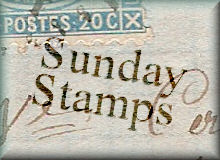 |
| 1972: Sir Ernest Shackleton 50th Death Anniversary |
The last expedition of what is termed the Heroic Age of Antarctic exploration was Shackleton's 'Imperial Trans Antarctic Expedition' which set sail from Buenos Aires in August 1914. It was an attempt to make the first land crossing of Antarctica but it turned out to be an epic test of grit and pluck. It is appropriate that the ship that sailed them all to the Weddell Sea was called 'Endurance' and here the stamp shows it beset in the ice (which they encountered much earlier and harsher than was anticipated). Stuck fast in ice they were moving in northerly direction and by the 24 February realised that they would be held in the ice over winter. As the sun set in May for dark days of mid winter they continued to drift north. Still optimistic that eventually come summer they would drift free however when August came Shackleton described what happened as, the "worse squeeze". On 27th October they abandoned ship and set up camp on the ice flow.

Designated Ocean Camp, and shown here as photographed by the Australian photographer Frank Hurley (1885-1962), I especially like the man on the high lookout. Lancaster Maritime Museum had a temporary exhibition of Hurley's wonderful photographs from the Royal Geographical Society Picture Library a couple of years ago and they produced a few postcards for the occasion of which I show two. The next is one of the two attempts to march to land, loading supplies into the lifeboats which made them weight a ton each.
This proved a futile attempt but the lifeboat shown here, the James Caird, would prove a lifesaver. On 30th October Shackleton decided to try to make for Paulet Island which he knew had a food deposit on it, they then set up camp on a solid ice flow, they called this Patience Camp.
"It is beyond conception, even to us, that we
are dwelling on a colossal ice raft, with but five feet of water
separating us from 2,000 fathoms of ocean and drifting along under
the caprices of wind and tides, to heaven knows where." Diary of Frank Hurley.
By the summer (21st December) the food shortage became acute and in February 1916 the dogs that had survived were shot
. The ice flow began to split on 8th April forcing departure and the 28 men piled into the three lifeboats and set off for the 100 mile journey to the remote and uninhabited Elephant Island
On reaching the island the decision was made to adapt the largest boat James Caird (22½t ft) for a 800 mile journey to try to get help from the whaling station on South Georgia. Shackleton chose five of the toughest and and best sailors for his journey, Worsley (the Endurance captain and for this journey the navigator), Crean, McNish (the carpenter who adapted the boat), McCarthy, and Vincent.
The journey encountered gales, ice and the highest wave that Shackleton had ever seen in his time at sea. On 8th May 1916 with a miracle of navigation and seamanship the James Caird landed on the uninhabited west shore of South Georgia. Pausing to recover from the journey suffering from frostbite and ever deteriorating health on May 19th Shackleton, Worsley and Crean set out on foot for the whaling stations, a journey of 22 miles over unmapped mountains
.
"The final stage of the journey had still to
be attempted.... Over on Elephant Island 22 men were waiting for the
relief that we alone could secure for them. Their plight was worse than
ours. We must push on somehow."- Sir Ernest Shackleton, South
Marching for 36 hours they arrived at Stomness station, unrecognisable to the station manager who had met them two years earlier. On reuniting with the men on the other side of the island Shackleton made plans to rescue those left behind on Elephant Island which grew ever more frantic as they were thwarted by ice and weather. Eventually with his fourth attempt in the tug, Yelcho (loaned by the Chilean government) on 30th August 1916 the castaways ran onto the beach, Shackleton, straining through
binoculars, counted anxiously.
"They are all there!" Worsley reported
him crying.
The last stamp of the set shows the schooner rigged steamship Quest in in South Georgia aboard which Shackled died of a heart attack on 5 January 1922. He now lies buried in the Grytviken cemetery on South Georgia, In 2011 after the ashes of Frank Wild (second in command and in charge on Elephant Island), were discovered in a vault in Johannesburg they were interred by Shackleton's side with the inscription "
Frank Wild 1873–1939, Shackleton's right-hand man". The occasion was also commemorated by a South Georgia stamp set but unfortunately one I don't have.





